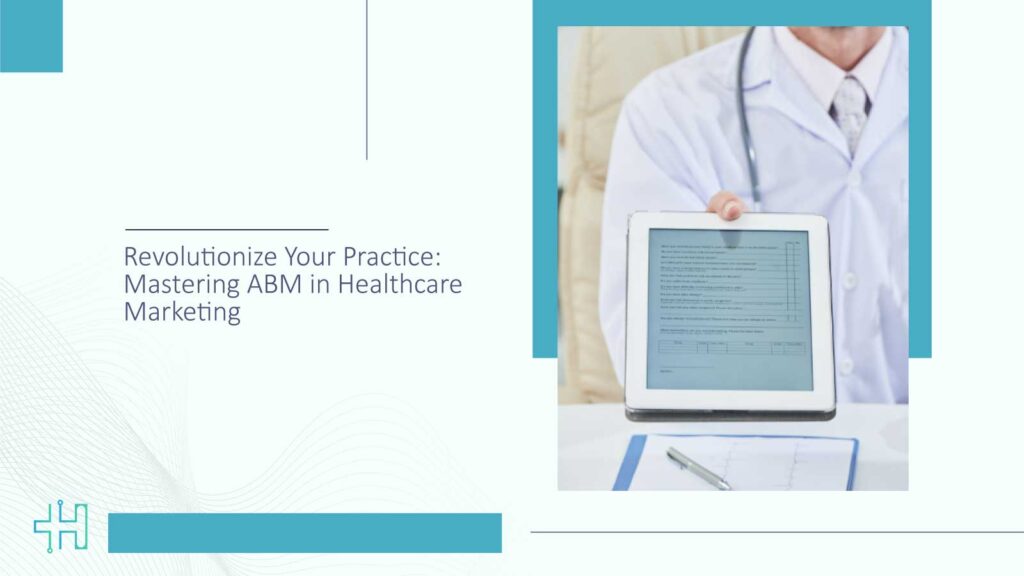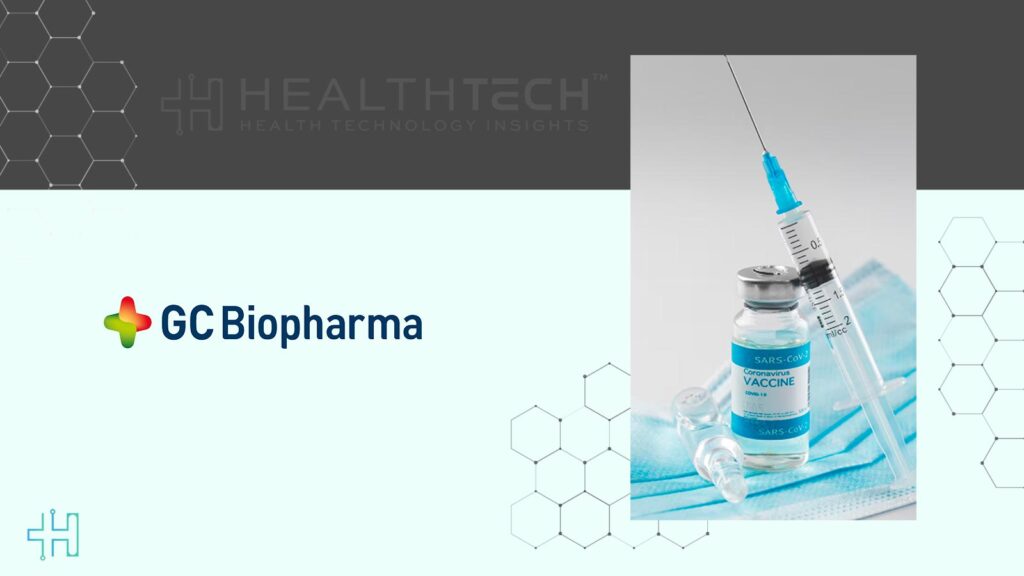If you’re in healthcare marketing today, one thing is clear: broad-stroke tactics just don’t cut it anymore. In an industry where trust, regulation, and high-value contracts dominate, precision is power. That’s why account-based marketing has emerged as a game-changer for healthcare marketers, offering a smarter, more personalized way to engage decision-makers.
The most successful companies aren’t shouting louder, they’re speaking directly to the right people. ABM helps you do just that.
What Is Account-Based Marketing?
At its core, account-based marketing flips the traditional funnel. Instead of casting a wide net and nurturing whatever comes in, ABM starts by identifying high-value accounts and crafting highly tailored campaigns just for them.
Imagine trying to win over a hospital CFO with the same email you’d send to a clinic’s IT administrator. It doesn’t work. With ABM, you treat each key account as a market of one, aligning sales and marketing to deliver hyper-personalized value.
According to a 2024 Forrester study, 87% of B2B marketers report that ABM delivers a higher ROI than any other marketing strategy. In healthcare, where buying cycles are long and stakeholders are many, the ROI is even more pronounced.
Why ABM Is Uniquely Suited to Healthcare
In healthcare, purchase decisions often involve:
- Multi-layered decision chains.
- Compliance, security, and patient data concerns.
- Large-ticket technologies or systems.
- Regional or institutional bureaucracy.
- Here’s where account-based marketing shines.
You’re not selling a $20 widget, you’re nurturing a $2 million software implementation. That means marketing must be tightly aligned with sales, deeply researched, and individually tailored.
Take Epic Systems, for example. Their outreach to hospital systems isn’t just polished, it’s personalized. They use intent data and firmographics to tailor messaging at the department level, building trust over months, not days. That’s ABM at work.
ABM Outperforms Traditional Tactics
Account-Based Marketing delivers higher ROI by focusing marketing efforts on high-value accounts with personalized outreach, rather than broad, one-size-fits-all campaigns. In healthcare, where decisions are complex and cycles are long, this precision leads to faster conversions and more meaningful engagement.
Still on the fence? Here’s what the data says:
- MarketingProfs found that companies using ABM see a 208% increase in revenue compared to those using traditional demand-gen strategies.
- Gartner reports that B2B buyers are 57% through their decision process before they even talk to sales, meaning your pre-sale marketing has to feel personal and relevant.
- ITSMA data shows that ABM can improve deal sizes by 170% in healthcare tech sectors.
Real-World Healthcare Use Cases
Healthcare brands are using ABM to close bigger deals faster by targeting decision-makers with tailored messaging and content. From AI diagnostics to credentialing tech, ABM helps turn intent into impact with precision outreach.
Let’s look at how leading health tech marketers are using ABM today:
Nuvolo
A healthcare technology solutions provider leveraged ABM with a “1‑to‑1” strategy targeting 5–10 high-value hospital systems per quarter. Their campaign included:
- Custom-branded landing pages.
- Intent data via Terminus + HubSpot tracking.
- Personalized outreach tailored to each target account.
They secured 31 meetings and generated 17 qualified opportunities within a 120-day pilot. That translated to $2.7 million in closed deals over six months.
Caregility
A virtual care technology company, Caregility, implemented an ABM strategy to connect with decision-makers across 1,500 hospitals and 63 health systems. Their campaign included:
- Targeted LinkedIn and display ads guided by Bombora intent data.
- Segmented outreach aligned with buying stages.
- Engagement insights from multi-channel behavioral tracking.
They improved engagement across multiple hospital departments and gained deep visibility into customer research behavior, accelerating their pipeline through personalized marketing at scale.
Building Your Healthcare ABM Engine
So, how can your team build a successful account-based marketing strategy? Here’s how:
1. Align Marketing and Sales
First, tear down the silos. Account-based marketing only works when marketing and sales collaborate on target account lists, shared KPIs, and messaging. Weekly check-ins aren’t optional; they’re essential.
2. Use Smart Targeting
Use firmographics, technographics, and intent data to identify accounts with the right buying signals. Tools like Bombora, 6sense, and Demandbase can help.
3. Build Personalized Content at Scale
Don’t just personalize names, personalize problems. Create case studies, webinars, and landing pages that speak directly to a CFO’s compliance worries or an IT director’s integration concerns.
4. Engage Across Channels
ABM doesn’t live on one channel. Coordinate messaging across email, social, webinars, and even direct mail. Consistency builds trust.
5. Measure What Matters
Instead of focusing on MQLs, measure pipeline velocity, engagement depth, and deal progression. ABM is a long game; don’t use short-game metrics.
“Currently, 36% of B2B digital marketing budgets go toward ABM.”, as stated by LinkedIn’s Market Research Manager, Tim Bollish
ABM Tech Stack Essentials for Healthcare
Here’s a quick guide to tools that work well in the health tech space:
- 6sense or Demandbase – for identifying in-market accounts and anonymous intent signals.
- HubSpot or Marketo – for automating and personalizing email journeys.
- LinkedIn Ads + Sales Navigator – for direct outreach to healthcare decision-makers.
- Uberflip or PathFactory – for building content hubs that adapt to each account.
- Gong or Chorus – to analyze sales conversations for messaging resonance.
Rethinking ROI: What Does Success Look Like?
In healthcare, success isn’t just leading relationships, trust, and strategic conversations that convert. That’s why account-based marketing feels slower but wins bigger.
With account-based marketing, success looks like:
- High-value account penetration.
- Shortened sales cycles.
- Multi-stakeholder buy-in.
- Increased contract value.
- Higher retention and upsell rates.
And when paired with a strong data strategy, account-based marketing becomes not just a marketing tactic, but a revenue engine.
The Human Side of ABM
Here’s the truth: Account-based marketing works because it’s human. Healthcare is personal. It deals with life, health, and trust. So why shouldn’t our marketing reflect that?
When you take the time to speak to your audience’s real concerns, the compliance stress keeping them up at night, the tech debt slowing their teams, you don’t just earn leads. You earn partnerships. If you’re ready to revolutionize your practice, account-based marketing is your starting point.
FAQs
1. How is account-based marketing different from traditional healthcare marketing?
ABM targets specific high-value accounts with personalized messaging, unlike traditional marketing, which aims broadly.
2. Can smaller health tech companies use ABM effectively?
Yes. ABM helps smaller teams focus on fewer, more impactful leads, maximizing results without large budgets.
3. What kind of content works best in ABM for healthcare?
Tailored content like case studies, webinars, and whitepapers that address decision-makers’ specific pain points works best.
4. Is ABM useful beyond winning new customers?
Definitely. ABM also helps retain clients and uncover upsell opportunities through personalized engagement.
5. How soon can we see results from ABM in healthcare?
Expect meaningful results in 3–6 months. ABM builds long-term trust and shortens complex sales cycles.
Dive deeper into the future of healthcare.
Keep reading on Health Technology Insights.
To participate in our interviews, please write to our HealthTech Media Room at sudipto@intentamplify.com








